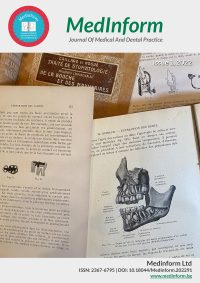Issue One 2022
2022, Vol. 9, issue 1, (June)
Literature Review
D-Dimer: A Literature Review
Abstract:
The liver is responsible for the synthesis and clearance of most of the proteins involved in the two cascades- coagulation and fibrinolysis. Some patients with liver cirrhosis can experience severe bleeding whilst other may have thrombotic complication.
Evaluating the coagulation activity in ascitic fluid, there were solid evidences, that ascitic fluid is a procoagulant. PT and INR in serum increased significantly from Child A to C, while fibrinogen decreased. Serum D-Dimer levels were founded higher in cirrhotics with ascites, especially in Child C group, in HCC, in SBP condition and decrease after resolution of ascitic fluid. D-Dimer levels can be lower in serum than in ascitic fluid.
In oncology there are solid evidences for the prognostic value of D-Dimer. Serum D-Dimer is qualified there as a prognostic factor associated with increased mortality risk and shorter overall survival.
More in-depth research is needed towards which levels of D-Dimer in serum or ascites could be a prognostic factor for SBP, for an increased likelihood of portal thrombosis or bleeding from GIT. It can be speculated, that D-Dimer levels can be used as prognostic factor for various complications in liver diseases. The study of D-dimer in hepatology could influence future therapeutic regimens.

